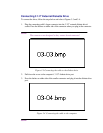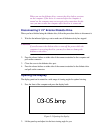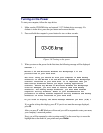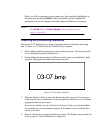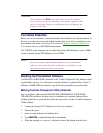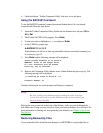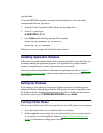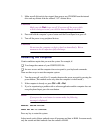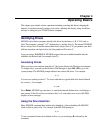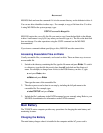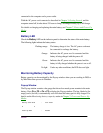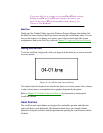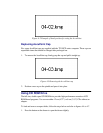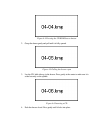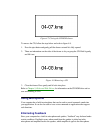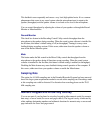
Chapter 4
Operating Basics
This chapter gives details on basic operations including accessing disk drives, charging the
batteries, using the keyboard’s ten-key pad overlay, adjusting the display, using AccuPoint
and tips on caring for your T2150CD series computer.
Identifying Drives
MS-DOS and software programs identify disk drives by the letters A, B, C, D, E and so
forth. The computer’s external 3 1/2” diskette drive is usually drive A. The internal CD-ROM
drive is always drive D and the internal hard disk is always drive C. If you partition your hard
disk into more than one logical drive, the first partition will be drive C.
If you are using a RAMDRIVE, MS-DOS assigns it the next available identifier after the
identifiers for the hard disk (for example, drive E).
Accessing Drives
When you boot your computer from drive C, the screen displays the Windows environment.
To change drives, you can use the Windows File Manager or press Alt + F4 to go to the
system prompt. The MS-DOS prompt indicates the current disk drive. For example:
C:\>
You are now working in drive C. To access other drives, type the disk drive letter followed
by a colon (:). For example:
C:\>A:
Press Enter. MS-DOS logs onto drive A, usually the internal diskette drive, and displays a
new prompt. If the drive does not contain a disk, or if some other error occurs, MS-DOS
displays an error message.
Using the Drive Identifier
Many MS-DOS command lines include drive identifiers. A drive identifier tells MS-DOS
where to find or place a file. For example, if the MS-DOS prompt is:
C:\>
To run a command located on a diskette in drive A, you would type A: followed by the
command:



